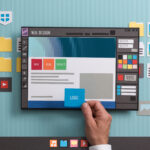How Design Thinking can cut your IT expenses by a whopping 40%!

The critical element of design thinking
How many Softwares do you use for your daily tasks to be accomplished at your office? Are there any specific tools you use to do just one thing and then translate or collate the data to be used in another software? What are the key criteria you look for while spending on some software?
Well, MNCs use a variety of Softwares for different purposes. These companies spend massively on licensing Softwares every annum. They have no clue if their employees are actually using all the Softwares. There is a big gap in the management of Softwares resulting in lower transparency in the system.
Softwares represent as much as 25% of all IT spending. Most businesses are over-spending on software licenses, because they do not keep accurate records of the software they have deployed and they don’t have a strategic solution to manage and optimize software spend which is costing enterprises billions each year. They lose track of their purchases and struggle to work out which licenses need renewal, wasting large amounts of money on licenses that they do not need.
Large and midsize businesses these days, on an average, utilize 14.3 separate applications, according to some report. That’s a lot, and probably too many in most cases. We can break it down even further as well. If an average employee uses 14 separate programs on a daily basis, And if your company has 75 employees, you have to track 1050 user software accounts which is crazy.
So how do you bring together the disparate Software of your organization?
This is why it’s critical to have design thinking in your organization.
Design thinking should be at the core of strategy development and organizational change in order to create a culture that’s focused on this way of solving problems. Design thinking can be applied to products, services, and processes; anything that needs to be improved.
Big companies like Apple, Google, Nike and Coca-Cola use design thinking in their day-to-day operations.
Design thinking has that “wow” factor that makes products more desirable and services more appealing to users
Let’s model a scenario of using design thinking for managing IT expenditures for the oil and gas industry.
If we were going about this for the oil and gas industry we would start by asking what is our big task: to redefine how certain types of data are collected and used, which softwares are used, how employees are engaged using different softwares? How is data transferred between employees?
And then we would identify key personas and sit down with them, ask targeted questions about their experience — as an employee — try to pull from them an unanticipated solution and take that back to them to show them the visual solution derived from their answers.
If we were to provide a design driven solution for this, the interface would have the following features:
- Real-time reporting and tracking of problems
- Interface to view real-time status of all the departments at one glance
- A common platform to connect all the Softwares
- Crisp and clear communication
- Dashboard with a glance view of Key Performance Indicators
- License management for all Softwares
- Usage stats (run times, use times, etc)
- Graphical form of software’s renewal
- Quick access to information
- Well defined color scheme
- Live commenting feature for all the employees
Let us take up one more scenario of using design thinking in the manufacturing industry. Design thinking can be used here to not only bridge the gap between consumers and manufacturers, but also optimizing manufacturing processes across the supply chain, helping manufacturers achieve higher operational efficiencies.
Design thinking is more important in manufacturing now because the focus is not only on products but its application and usage. In the past, manufacturers have focused purely on product features, but in today’s time they must be customer centric and should consider, how the product will be used or what behaviors end users exhibit.
The manufacturers that implement design thinking across applications with user experience in mind are at the forefront of innovation today.
If we were to provide a design driven solution for this, we would consider providing a dashboard which reflects real-time data relating to the following areas to drive better efficiency:
Optimizing the workforce: By taking a demand-calibrated versus a capacity utilization approach to production decisions, companies can better balance workforce requirements and optimize labor costs.
Optimizing the operational costs: Real-time, accurate visibility into the operating conditions is critical. Data related to product inventory, the cost of storage, any necessary insurance, maintenance and other factors should be showed upfront. By calibrating operating cadence to customer demand, companies can avoid “out-of-stock” occurrences without storing excess inventory.
Optimizing the process: Getting all great details of the process characteristics – helps to manage the whole and not a part, avoiding partial process optimization or improving a process part.
Providing AR-enabled solution: Introducing Augmented Reality solution in your facility will enable technical experts to communicate with those offshore live via Ipads. Technical experts can also virtually monitor & support several offshore locations at once saving huge amounts of manpower, time and money.
Applying these principles to the processes of creating, manufacturing and connecting products to a larger ecosystem is crucial for manufacturing industries.
Design Thinking for Future
We believe that Design thinking can help you to effectively manage all your inventory tools at one place and save up to 30-40 percent of your IT expenditure each year, a significant amount of money. Having a design driven interface will unite people, processes, and technology to control and optimize software licensing investments, and align IT investments with business needs.
The time has come for your company to manage and utilize your software licenses better. Traditionally companies have relied on IT asset management solutions to manage Softwares, but today the business imperative has transformed from counting what you have installed to optimizing the software licenses, while ensuring that companies buy only what they need.
Whether you are an enterprise, government body or educational institution, are you lacking a strategic solution for your business? Well, NetBramha can help your business gain visibility and control your IT expenses by providing a comprehensive design solution.


